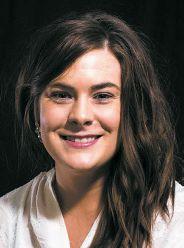DATA PROTECTION



PAGE 12
ALSO INSIDE:
TRENDS WITH VIRTUAL HEALTH CARE
NORTH DAKOTA’S DRONE COALITION AGAINST CORONAVIRUS


to allofthe
healthcare workers and related staf f
grocery store employees
truck drivers
teachers,educators,and staf f
trash and recycling collectors
police,firefighters,andemergencyservices
gas stationattendants
restaurantcooks anddeliver y drivers
postal workers
supply manufacturers anddistributors
civic employees
volunteers
janitorial staf f
and to ever yone who givestheir all tirelessly ever yday, whetherathomeorat work, sothat we can get through these extraordinary times together.
Letour expe rt sh elpyou custom -designane mploye eben efits pa ckagethatworks fo ryou to daya nd he lps yo ug et to wh ereyou wa nt to be to mor row.
Let’sget star tedonyouremployeebenefits plan .


Co ntac tana ge nt to day.
Jo Hatfield
Fa rg o•701 .2 82 .1 153
Mitch Kudrna
Fa rg o•701 .2 82 .1 44 6
Nicole Wolla
Di ckin so n•701 .7 15 .9 02 8
Ryan Hartje
Bi sm arck •701 .2 55 .5 562
DonKramer Grand Forks/DevilsLake 701.79 5. 53 48
Derek VanDyke
Mi not•701 .8 58 .5 01 9
HollyBohler Willi ston •701 .7 15 .9 02 9
Mike Middaugh
Devil sL ake•701 .2 82 .1 16 5
©Copyright Employers Mutual CasualtyCompany2020. All rights reserved.

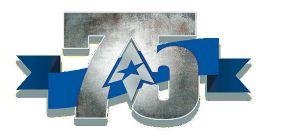
being in the steel fabricating and manufacturing business. To honor the company’s anniversary, TrueNorth Steel has brought forward some of the history including more about its founder, Ole Rommesmo Sr.
Ole Sr. was an immigrant from Norway who after he landed in this country settled in northern Minnesota. His first job was working as a lumberjack for a timber company. Starting wage was a little over a dollar a day and his board and room expense was a dollar a day, so to quote Ole Sr., “I wasn’t getting too far ahead. “
Knowing a bigger city would potentially offer more opportunity, he moved to Minneapolis and got a job at a steel tank plant as a general laborer; there he learned the trade of welding from his Forman. Ole Sr. believed if you learned a trade, any trade, you could move anywhere and get a job. With that belief, he eventually took his welding skills to Fargo, North Dakota, and was hired as a welder for the Fargo Foundry Company, currently Mid America Steel.
After working for the Fargo Foundry Company, Ole Sr. attempted to break out on his own. He found himself not succeeding but never kept trying. He
ended up going broke four times before World War II. At the onset of the war, Ole Sr.’s leadership and steel working ability was recognized by the United States government. In Lieu of serving his country in combat, Ole Sr. was deployed by the United States military to northern Canada. There he worked as a welder/construction foreman on an airbase, which the United States and
Canada were jointly constructing. He worked there until right before the end of World War II.
Upon his return to Fargo, Ole Sr. attempted for a fifth time to start his own steel business, Fargo Tank Company in 1945. He initially started manufacturing steel storage tanks for the oil and agricultural industries. With only five employees, that original team manufactured tanks in the evening and sold and delivered tanks during the day. He would always say “If hard work were to kill a man I should’ve been dead years ago.”


Ole Sr. was known for his “dynamic go-go” personality. He seemed to carry a strong sense of blue-collar pride and used his values and vision to create jobs and build his business as strong as steel.

“I wasn’t getting too far ahead.”
“If hard work were to kill a man
I should’ve been dead years ago.”Ole Rommesmo Sr.
With hard work and determination, he found success in the steel tank business which he passed along to his son, Ole Jr. upon his death in 1990. Such achievement allowed this father son business to expand into the corrugated metal pipe, structural steel, and bridge industries. With the attainment of broadening the product lines, the company expanded and established Huron Culvert and Tank (Huron, SD),


Mandan Steel (Mandan, ND), Johnston Fargo Culvert (Fargo, ND), Dakota Steel (Rapid City, SD), Precision Stair and Steel (Mandan, ND), and Roscoe Steel and Culvert (Billings & Missoula, MT; Casper, WY) over the years. The businesses were known by their names individually.

Ole Rommesmo, Jr. now leads the business, and in 2011, Ole Jr. integrated

these individual steel businesses into a single organization, forming TrueNorth Steel. TrueNorth Steel carries the company’s more than seven decades of history into the future – continuing to deliver on the values of integrity, humility, focus, commitment and knowledge on which Ole Sr. founded the business and continuing to serve its customers with reliable steel products they can count on.



AS EMPLOYEES WERE SENT HOME TO WORK DURING THE PANDEMIC, ONE TOPIC THAT HAS ARISEN IS PROTECTING COMPANY AND PERSONAL DATA. SEAN TODD, SECURITY SPECIALIST WITH NETWORK CENTER INC. IN FARGO, N.D., OFFERS SOME HELPFUL TIPS TO STAY SAFE WHILE WORKING REMOTELY.


NETWORK CENTER INC.

EideBaillywould liketo congratulateitsnewest partnersintheupperMidwest. Theirdedicationtoourclients, ou rmandourcommunities inspireuseveryday.









The world has changed since the last time stories for Prairie Business were put together.
One thing that has not changed is the magazine’s focus on bringing readers the most recent trends in the business world. As expected, the COVID-19 pandemic has brought new trends and enhanced or quickly accelerated others.
In this issue we discuss some of those trends related to the pandemic – remote work and its challenges and opportunities; the increasing demand for virtual health care; and new insights into the insurance industry.
The pandemic has certainly caused many business leaders in the upper Midwest and elsewhere to think differently about how they do business and to try new things as they seek to adapt to today’s challenges.
These are trying times, indeed – for business, the economy, for families. But many business owners and entrepreneurs have experienced rough times before. And this probably won’t be the last of the challenges.
Prairie Business would like to hear from its readers about what some things are they have done to meet current challenges. Particularly, what are some things that are working for your business during these unprecedented times?
As you can see in this issue, the pandemic is front and center on the minds of business professionals. It not only changed, at least for a time, how we socialize with others but the very way we do business.
As one source told me during an interview, it was difficult for her to think of anything else but the pandemic and the resulting changes it prompted her business to make.
But the future is just around the corner – and better times are coming. It’s something we have to believe, just as we know that with every drab winter there eventually comes summer and sunshine.
Looking ahead to June, Prairie Business will cover trends in architecture and engineering, construction, and the legal services business. Stay well.
Until next time, Andrew Weeks
I look forward to hearing from you at aweeks@prairiebusinessmagazine.com or 701-780-1276.
PUBLISHER
KORRIE WENZEL
AD DIRECTOR
STACI LORD
EDITOR
ANDREW WEEKS
CIRCULATION MANAGER BETH BOHLMAN
LAYOUT DESIGN JAMIE HOYEM
ACCOUNT MANAGERS
NICHOLE ERTMAN 800.477.6572 ext. 1162 nertman@prairiebusinessmagazine.com
PETER FETSCH 800-477-6572 ext. 1172 pfetsch@prairiebusinessmagazine.com
Prairie Business magazine is published monthly by the Grand Forks Herald and Forum Communications Company with offices at 375 2nd Avenue North, Grand Forks, ND 58203. Subscriptions are available free of charge. Back issue quantities are limited and subject to availability ($2/copy prepaid). The opinions of writers featured in Prairie Business are their own. Unsolicited manuscripts, photographs, artwork are encouraged but will not be returned without a self-addressed, stamped envelope.
SUBSCRIPTIONS
Subscriptions are free www.prairiebusinessmagazine.com
ADDRESS CORRECTIONS
Prairie Business magazine Box 6008 Grand Forks, ND 58206-6008
Beth Bohlman: bbohlman@prairiebusinessmagazine.com
ONLINE www.prairiebusinessmagazine.com





















Long before companies sent their employees home to work during the coronavirus pandemic, the business in which Grant Meyer works was well prepared for remote-based work.

That preparation didn’t happen overnight but was something that, with foresight and ingenuity, the engineering and environmental services business had worked on for years.
“We’ve been prepared for quite a while,” Meyer, chief executive officer for AE2S, told Prairie Business during a conference call on the morning of March 30. Meyer, who is based in Maple Grove, Minn., was using the same technology that many of the company’s employees, scattered across other states, were using that day; other tools used were video conference applications such as Microsoft Teams. “It’s been a bit of an evolution over time, I suppose.”
He said what started out trying to be prepared for when an employee might need to work from home for a day or two benefited the company well when most of its some 300-member staff, spread between eight offices in five states, were sent home during the pandemic.
Remote work was something that began trending with many companies before COVID-19, but in March, whether or not businesses were ready, it became one of the biggest trends of the year. Meyer said his company just happened to be prepared.
Foreseeing what home-based work would look like in the future, Kate Lister, president of Global Workplace Analytics (GWA), told CNBC that the pandemic was “going to be a tipping point.”
“We plodded along at about 10% growth a year for the last 10 years, but I foresee that this is going to really accelerate the trend.”
Home-based work during the pandemic brought on an array of challenges and opportunities, including differing perspectives.
Kevin Roose from the New York Times said from his observations the response to remote work has been mixed. While many people said they like the isolation from the work office, others find it difficult to function without the in-person camaraderie of their colleagues.
While the home-based worker might be more productive than in the office, he wrote, “they often miss in harder-to-measure benefits like creativity and innovative thinking.” He noted a study that said “team cohesion suffers in remote work arrangements.”
However, Michelle McDonald-Trostad, AE2S human resources generalist who works out of the company’s Grand Forks, N.D., office, said she was one of the first employees to start working remotely during the pandemic and enjoyed the experience because she could be with her kids while still getting things done for work.
She wasn’t quite sure what to think of having a permanent virtual office, but she quickly got the hang of it.
“Now it’s kind of like, hey, this is a good gig,” she said. “I feel like I’m at work just like I would if I were in the office. I don’t have my people to chat with down the hall. … I can’t walk down and say hi to my peers, but we’ll message.”
She said team members will send virtual smiles and check in with each other throughout the day to see how everyone is doing, thanks to the company that provided the technology to its employees.
Meyer said the company was considering criteria and equipment to have additional employees work remotely even before the pandemic, but the worldwide emergency accelerated those plans. Luckily, he said, the company’s IT team was on the ball and got everyone connected and up to speed quickly.
Sean DeKok, senior client and human resources leader with Ulteig, said his company also was prepared to act quickly when the social distancing orders came into effect. It helped that out of its 600 or so employees, Ulteig already had a large number of staff whose positions allowed them to work remotely.
“We’ve had staff working remotely for a long time,” said DeKok, based in St. Paul, Minn., noting the company’s IT team had prepared long in advance to make sure all employees had the tools they needed to work remotely. “We really prioritize flexibility for our employees. They all have laptops versus desktop workstations, so that allowed us to really transition quickly to the current climate. … I think compared to many companies it was a very easy transition for us.”
Other companies that weren’t quite prepared had to jump in with both feet, in essence, and hope for the best.
“It quickly went from most businesses not doing remote work to the majority of businesses having their workforce work out of their homes,” said Sean Todd, director of security at Network Center Inc in Fargo, N.D. “It’s one of those decisions that came fast and quick, and unfortunately there wasn’t the ability to do a lot of planning.”
He said many businesses new to home-based work did the best they could and plowed ahead with the necessity to get things done. But as days stretched into weeks people started settling into a new routine and were able to better access some of the communication and other tools they needed.
“They’re able to connect, they’re able to start doing video conferencing, they’re able to access their information,” he said. “But the next step is, how do we control that?”
One thing that upped the HR concern was data protection.
“They’re able to connect, they’re able to start doing video conferencing, they’re able to access their information,” he said. “But the next step is, how do we control that?”
At one point during the pandemic, 46% of American businesses had implemented remote work policies, an increase of 173% since 2005.
With so many people working remotely, Todd said it’s important that companies evaluate what risks they’re willing to take when employees work away from the office, and leverage safety measures as much as possible to protect company data.
“When you’re within the four walls of an office you connect with a server that is internal or resources in which you’re not having to traverse the internet to get to a lot of (applications and data),” he said. “Today we’ve put that on its head and almost all of the resources we’re trying to access are sent across the internet. … So the challenge is how are we securing those communications?”
Some security options include making sure web addresses visited and signed into have a “locked” icon in the address bar, meaning it’s a secure site, and leveraging virtual private networks (VPN) to connect to the home office to retrieve files.
“If we’re not using a VPN, what file-sharing programs are we using and are they secure?” he said.
continued on page 14
‘WHEN YOU’RE WITHIN THE FOUR WALLS OF AN OFFICE YOU CONNECT WITH A SERVER THAT IS INTERNAL OR RESOURCES IN WHICH YOU’RE NOT HAVING TO TRAVERSE THE INTERNET TO GET TO A LOT OF (APPLICATIONS AND DATA),’ SAYS SEAN TODD, DIRECTOR OF SECURITY AT NETWORK CENTER INC IN FARGO, N.D. ‘ TODAY WE’VE PUT THAT ON ITS HEAD AND ALMOST ALL OF THE RESOURCES WE’RE TRYING TO ACCESS ARE SENT ACROSS THE INTERNET. … SO THE CHALLENGE IS HOW ARE WE SECURING THOSE COMMUNICATIONS?’
IMAGE: COURTESY OF NETWORK CENTER INC.

continued From page 13
He also said multi-factor authentication is especially important during remote work. What that means is when signing into an email account, for instance, a pass code is texted to the user to verify that it is the correct person trying to access the account.
Companies should also leverage their password complexity, Todd said, making sure passwords have a combination of letters, capitals and lowercase, numbers and symbols.
“Don’t use your home password at work,” he said, “and don’t use your work password at home because if it becomes compromised in one area it can become compromised in both pretty easily.”
The technology that many people and businesses have taken for granted, such as video conferencing tools and mobile applications, has “never been more utilized than they are today,” Todd said. Because so many people are online and using the same technology, some people may experience intermittent connectivity problems.
“Every issue can be slightly different but there has definitely been an increase in the usage of the various video conferencing platforms and at times it has introduced some potential issues with connectivity,” he said. “Some video and audio will cut out.”
But another problem lurks behind the curtain – or in files and links attached to emails.
Todd said scammers have been paying attention to what’s going on in the world and are taking advantage of it through an increase
in phishing, in which they try to fool people to click on links or open attachments in an effort to gather personal and company information.
Don’t do that. If an email looks suspicious, it most likely is suspicious.
“People are trying to exploit COVID-19, specifically in light of some of the bills in the House and Senate,” he said. Emails have been sent by scammers trying to fool the user into thinking they’ll be getting a payment in the mail but that they need to click on a link or answer questions to verify their name and address.
“If it looks too good to be true it usually is,” Todd said. “The federal government most likely will not contact you through email.”
Some tips are to take a look at the email sender carefully, see what links might be misspelled or replaced. And, he said, it’s always good to verify with the agency or company by calling the proper business number, not necessarily the one attached to an email, to verify if what was sent is legitimate.

Another HR issue is ergonomics and injuries at home.
For instance, Michelle Knockson, a physical therapist at Essentia Health in Fargo, said more people are reaching out with back pain because their home desks are not set up ergonomically, and there are more reports of injuries from people working from home during the pandmeic.
Another issue is making sure employees are staying productive when they’re out of the office and don’t have a supervisor looking over their shoulder throughout the day.
DeKok said one way Ulteig makes sure employees are staying productive is by providing them with the tools they need to keep busy and be able to do their jobs. He said it also utilizes communications tools, such as Microsoft Teams and Cisco Jabber, so that employees can collaborate with one another.
Video and other communication tools are “just part of our normal routine for business,” he said. “With the number of offices we have in a highly matrix organization, video conferences are a daily part of our operation.”
DeKok and Meyer know, however, that all of the tools in the world won’t make employees effective workers.
“You can put all the technology and all the software you want around this (remote work philosophy) and you could still not be very effective,” Meyer said. “I think a big part of what we have done and may continue to do, especially now, is stress the importance of really having a mindset of teamwork, collaboration and communication. If people aren’t committed to working that way, even with all of the tools in the world, it’s just not going to happen. … We’re trying to create a culture where people want to do this and to engage that way.”
Meyer said he doesn’t consider it a challenge, however, but rather an opportunity to teach and grow as a team.
“I would say the biggest challenge, and I’m going to call it an opportunity, is that we really have to work together,” he said. “We’re really trying to invest a lot of energy.”
Some employees with the company have virtual lunches with their teammates as another way to socially interact while working apart; some also started doing virtual happy hours.
Still, Meyer understands the challenges that many employees might face working at home, where their spouse may also be working in the same environment and the kids are out of school.

“There’s probably a lot of responsibility around them,” he said. There’s something else Meyer expects: When people start coming back to the office, he’s pretty sure there’ll be some employees who will inquire about the possibility of working remotely from now on, at least every so often.
According to some economists, that’s a likely scenario across the board.
“People will change their habits, and some of these habits will stick,” Susan Athey told the Washington Post. “There’s a lot of things where people are just slowly shifting, and this will accelerate that.”
Before the worldwide emergency, around 56% of employees said they had a job where at least some of what they did on a daily basis could be done from home, according to Global Workplace Analytics. And about 80% said if they had their way they’d prefer working from home more often.
Lister, with GWA, projects the longer people work from home, “the greater the adoption we will see when the dust settles.” She estimates that 25-30% of the workforce will continue working remotely on multiple days of the week over the next two years.
Meyer said: “We’ll probably see a little bit of both, people who want to get back to the office and people who will want to stay home.”
ANDREW WEEKS EDITORLike other companies in the upper Midwest and across the country, Blue Cross Blue Shield of North Dakota sent most of its workers home in March soon after the increasing spread of COVID-19 was declared a pandemic.
The company did this “so we can keep our operations running,” said Dr. Greg Glasner, chief medical officer in Fargo, N.D. It was to protect employees, customers, and to ensure “our members can get the service they need.”
But the insurance company, like many others, was affected by the pandemic in several other ways as well. Glasner said he saw changes he hadn’t even considered previously.
“It’s a very fluid environment,” he said in mid-March, “and things change, quite literally, from morning to afternoon.”
Something he never saw coming: Health and Human Services at the federal level waived penalties on consumer communication apps for connecting with providers during the emergency.

That meant health care now had the ability to use non-public-facing audio and video applications – such as Apple FaceTime, Facebook Messenger, Google Hangouts and Skype – during the public health emergency.
“This is unprecedented, a most unprecedented move for the federal government,” he said. “For the HIPAA watchdog to relax those penalties so that people can connect from home and not have to come in (to the office), that one I think even caught Blue Cross off guard.”
It was one of the big changes, but Glasner knew it probably would not be the only one.
“As a disclaimer,” he said, “you’re going to see a whole lot of parts in motion that have never been done before.”
Blue Cross Blue Shield of North Dakota in early March developed an action plan to continue to provide quality service to its members while protecting the health of its employees. Some of the changes it made was waiving any cost-sharing, including co-pays, deductibles and coinsurance for CDC-recommended laboratory testing of COVID-19. Glasner said BCBS didn’t want those items to be a barrier in getting testing done for patients who needed it.
“We’re here for the members and we’re here to serve the members,” he said.
“Most of the changes that we’ve made initially are to take down barriers so that no one feels they should wait, or avoid getting tested for the coronavirus.”
In addition, BCBSND waived cost-sharing for an in-network provider office visit, urgent care center and emergency room visit when testing for COVID-19, the disease that causes the respiratory illness. Waiving cost-shares may be done on a retrospective case-by-case basis; and subsequent hospital stays associated with COVID-19 will be covered in accordance with the member’s current health benefit plan. Further, BCBSND extended customers’ premium payment deadlines from 31 days to 62 days for all members with individual plans or small group coverage -- businesses with fewer than 50 employees.
For larger businesses with more than 50 employees, Glasner said BCBSND representatives will work with them directly on a case-bycase basis to determine alternative payment plans.

“In support of our communities and the impact this pandemic is having on our economy, we encourage all members and employer groups to pay their premiums as best they can,” President and CEO Dan Conrad said in a statement. “However, we recognize that we need to do all we can to support our members and ensure we remove the financial barriers they may have in getting care. We care deeply about the health and wellbeing of our members and are confident we’ll get through this crisis together.”
As businesses around the country are forced to reduce hours or lay off employees, BCBSND is also allowing greater flexibility in eligibility requirements:




· As long as premiums are paid, BCBSND will work with employers to keep employees on their health plan, even when their hours fall below current eligibility guidelines;
· BCBSND will also soon accept credit card payments from small group employers to aide in their ability to make premium payments;


· BCBSND will allow employers to remove or reduce current probationary periods for new employees, thereby allowing new employees access to their health plan sooner.
Glasner said the coronavirus issue remains a fluid issue and that the insurance company would continue to monitor and follow directions from the CDC, as well as state and federal recommendations.
For those who may still have problems making their premiums after the 62 days, Glaser said the member should contact blue cross to work out a payment plan.
“I think they just have to contact Blue Cross if they’re having trouble paying their premiums,” he said. “This could extend several months, and if (the government) shuts down a community, people still have to pay rent, they have to pay for groceries, they have to pay for their insurance, they have to make their car payment. So there’s going to be a reality to the economic downturn to this; it’s going to affect everybody.”
continued on page 18
continued From page 17
Randy Fenley knows his business. He’s familiar with its ebbs and flows, and watches the trends. But in all of his years as an insurance broker, he has never seen anything quite like the impact the coronavirus pandemic has had on the industry.
Fenley, an agent with State Farm Insurance in Grand Forks, N.D., said his business has not actually been impacted all that much by the pandemic – not yet anyway – but expects it will start to feel the effects within the next couple of months.
“I think the world is going to recover from this,” he told Prairie Business. “It’s just going to take six months before we start to get the economy back to where it was. I think we’re doing all the right things to make that happen.”
In the meantime, there are some things business professionals and their employees should know about insurance.

Fenley said there is a claim that can be filed for “disruption of business,” but there needs to be a physical loss associated with the disruption, such as caused by fire, flood, vandalism or theft. “There needs to be a sudden and direct physical loss” of property, he said. The things insurance does not cover are acts of war and, unfortunately, disease.
That means disruptions related to the coronavirus are not covered under the disruption to business model.
“This is a new animal that we’re dealing with,” Fenley said. “As you can imagine, if we were paying for the loss of businesses for two weeks, a month, six weeks, until July … we’d be bankrupted. There’s no way to cover that sort of thing.”
Erica Berg, underwriting manager with EMC Insurance in Bismarck, N.D., said much the same thing, but urged business owners to know their policies.
“Looking at this from a policyholder perspective, I think you just need to know what you have,” she said. “Read your insurance policy and discuss it with your insurance agent. I think if anything, just understanding your policy is important. During these times, not understanding what’s out there can cause anxiety.”
Fenley said now is the time businesses and people definitely don’t want to skimp on insurance. But, he warned, don’t buy it the way many millennials often purchase it.

People are used to buying online, he said, and if they’re not satisfied with a product they send it back. With insurance it’s different –though not everyone treats it differently.
His advice: Talk with an agent, ask questions, find out all you can and then make a decision.

Smar
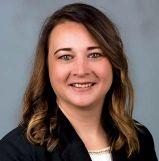
BISMARCK, N.D. • Erica Berg, an insurance carrier with EMC Insurance Companies in Bismarck, spoke with Prairie Business about the insurance industry. Like other industries, the company has felt the effects of the coronavirus pandemic, as well as some other challenges over the years; but Berg says it is still an industry she loves and one she is proud to be a part of in these uncertain times.
What is certain, no matter the challenges, is that insurance is as important today as it ever has been.
EMC Insurance has around 60 employees in 16 branch offices. It has one office in North Dakota, located in Bismarck, but out of that one office it serves the states Idaho, Montana, Oregon and Washington. EMC also has an office in Minneapolis that serves Minnesota.
We strongly believe we’re in a relationship business. We work with independent agencies to help them grow profitably and enhance the ability of our partners to deliver quality insurance products to the people and businesses we mutually serve. Our focus is commercial business and we do have a life insurance company that is under the EMC umbrella as well. Our four corporate priorities are inspiration, operational excellence, customer experiences and profitable growth.
Auto insurance and property insurance are two areas of focus for improvement in the industry right now. Auto has posed its challenges for many years now with rising claims costs, increased costs for repair, distracted driving, increased frequency of claims are areas we work through to improve results. While on the property side with similar concerns of rising costs of materials, increased costs paired with changes in weather patterns and large catastrophe claims we’ve had to further evaluate our property exposures and adjust to those changes in the marketplace.
While the daily challenges haven’t completely changed the pandemic has changed the immediate focus. A lot of questions are being generated on loss of income coverage for the restaurant and hospitality industries. We’re getting questions about how coverage will respond. Most policies in the industry contain virus exclusions or the coverage trigger won’t extend because there isn’t direct physical loss to a location coverage in this instance may not extend. It will be interesting to watch the evolution of this within the industry and with legislation to see if anything can be developed similar to the Terrorism Risk Insurance Act that was passed shortly after the 9/11 attacks in our country to help provide assistance in situations such as these.
On the company side with our Underwriting team we are continually looking for ways to grow our footprint and write profitable commercial business. We underwrite exposures, analyze risk and determine appropriate pricing for that risk.
It’s a different kind of busy (during the pandemic). … We were able to equip people so they could be at home with their families. But I would say that the flow of new business for us has slowed down a bit because our agents aren’t obviously out prospecting and meeting people because we’re social distancing. But it turns out there’s a lot more questions coming in; our agents are asking questions about how coverage applies. We’ve also gotten a lot of calls from restaurants and in the hospitality industry asking if they can start making deliveries now, where maybe they didn’t make deliveries before, and things like that. We’ve really been trying to be accommodating as far as getting their questions answered and extending coverage in those cases where we may not have been providing coverage for that in the past.
We’ve really expanded how technology plays a role in our office. We have many remote team members that work remotely from their homes and to be able to have the technology to communicate effectively is so vitally important.
We’ve also been partnering with tech companies that have provided us with products that provide data on vehicle usage in vehicles and wearable devices that can help employees evaluate their movements to prevent bodily injury or repetitive motion type claims in an effort to improve workers compensation results. We also have a team of risk improvement representatives that are being trained in the use of drones to better evaluate roof condition and help our policyholders develop plans for maintenance and repair on roof structures for commercial buildings.
We are working to be more proactive in recruiting and bringing people into the insurance industry. We have partnered with Bismarck State College to develop a curriculum in which you can now get an insurance certificate. We are also hiring summer interns and have them shadow spend time with our underwriting team, marketing department and claims teams in order to give them a taste of the different facets of the industry in order to give them an idea of what a career in the insurance industry could look like. We are also rolling out our first year of EMC University which will be administered out of our corporate office in Des Moines which is designed to be a six week course that will teach our new team members the fundamentals of the industry such as the insurance contract and what is covered under a basic policy. We’re excited for all of these things to come together for enhanced learning.
I don’t know that it’s a business that many people think about when looking at career goals unless they have a friend or family member that has been successful in the business. That is where the efforts I mentioned earlier will hopefully help. It can be a fulfilling and rewarding career as there is a complexity to it that can be appealing as well as a customer service aspect in that you’re helping customers secure coverage for their personal and business assets.
What should businesses know going forward?
I encourage all businesses to know and familiarize themselves with their risks so they can appropriately insure what’s important to them. Read your policy, discuss questions with your insurance advisor. Understand the importance of not only the price of insurance but the coverages your policy provides. Lowest price doesn’t always translate to comprehensive coverage.
What’s the best thing about working in the insurance biz?
What keeps me going and helps me get up every day is the people part of it. If I didn’t know that I could help impact lives every day and find the purpose in what I do I’m not sure I’d still be in this industry. It’s always been a promise and a commitment to the people I serve. Our policyholders, agents, vendors and team members is what keeps me coming back.
What, as an insurance company, have you learned by the pandemic?
This pandemic has caused a lot of uncertainty not in just our industry but with everyone. It’s been nice within our industry to see the resilience of companies and agencies. We were able to get people up and running from home in pretty short order. The agents we work with are fighting the good fight and keeping in contact with their customers. Our industry has not stopped in light of all going on and it’s now much more apparent than before that we don’t have to be in an office setting to complete the work needed to accomplish our goals.
Will people still work remotely after the pandemic?
I would think for the immediate future we’ll bring people back into our offices when it’s safe to do so. In visiting with team members some love working from home and some not so much and don’t care for the isolation. We already have a pretty flexible working environment where people have the ability to work from home and I believe more will try to do it more frequently than before as in some cases it does pose less distraction.

Gone are the days when a person would visit their doctor only through an in-person appointment.
In many places in the upper Midwest and across the country, patients can now receive medical advice with their health care provider over the telephone and through video conference sessions. Patients still need in-person visits with physicians for more serious health issues, but for many less serious issues an appointment online will suffice. It was a trend before March 2020, but the coronavirus pandemic has accelerated these efforts.
Essentia Health, for example, prepared for more than a year to use video tools to better serve its patients, particularly those who live in rural settings. In mid-March, however, Essentia fast-tracked its plans and launched virtual visits to keep patients at home during the social distancing orders in an effort to slow the spread of COVID-19, the respiratory disease caused by the coronavirus.
“We knew that was where health care was going,” said Essentia Chief Medical Officer Dr. Rich Vetter. “But this pandemic has raised the issue to really a patient-safety and staff-safety issue, and so this was an ideal platform to launch it.”
Aside from a few hiccups along the way, Vetter and others said the new service has been welcomed by patients and caregivers alike. Physicians like it because online visits cut down on administrative tasks, and patients like it because they don’t have to leave their home to receive treatment.
Vetter shared the experience of an 87-year-old woman, just one of many, who said how much she appreciated the new service because it made her feel safe not having to leave her home to follow-up with her physician.
He said there were hundreds of other patient examples since Essentia launched virtual visits on March 18. On that first day, for instance, the number of virtual visits was around seven, he said. But by April 22, the last day Prairie Business received numbers before publication, the number of daily virtual visits across the network was around 3,500.
Al Hurley, the company’s chief operating officer, said he foresees virtual health care visits playing a larger role with the network in the future.
“Many of our follow-up visits tend to be of a shorter duration, like 15 or 20 minutes,” he said. “And if that patient travels 25 or 100 miles to see a specialist for a follow up … well, now they can do it at home and get the same quality of interaction and evaluation without spending that time traveling, and so there’s a tremendous value to the patient.”
Taylor Mertz, a family physician with Essentia, said the virtual visits are good for follow-up visits and consultations. He said he likes the virtual meetings because it allows him to still give quality service to his patients without all of the administrative tasks that go with it. The administrative work is done prior to the patient signing into the visit, such as filling out paperwork and answering a questionnaire.
It is all done and taken care of before logging in to visit with the doctor.
Most of Mertz’s colleagues are on board with virtual visits, he said, and the few who were not excited about it are slowly being converted as they learn more about its benefits.
“We’re probably about the 80-20 rule,” he said. “We’re never going to be 100%.”
Mertz still prefers in-person visits with his patients, he said, but explained that some diagnostic treatment can easily be done virtually.
“I can’t hear a heart murmur,” he said, noting patients still should come in for more serious issues, “but I can visualize them. I can say, ‘show me your rash; show me the swelling on your leg,’ things like that. There’s a lot we can document just through the visual aspect.”
Seeing a patient in their own home environment sometimes also is helpful to physicians, he said.
Michelle Knockson, a physical therapist, said much the same thing about physical therapy patients. It’s good to walk through therapy tips – or go through whole therapy sessions – with patients in their own environment.
Through video therapists also have been able to diagnose vertigo and guide patients through exercises to help them overcome their dizziness. This exercise, called the Epley maneuver, usually needs a second person to help the patient, however, Knockson said, and so it’s good to have a family member or friend there to direct the camera to the patient’s eye and help them through the maneuvers.
CHI St. Alexius Health, which operates medical facilities in several parts of North Dakota, also launched its own virtual service in March for people experiencing minor medical issues.

“This is the first time CHI St. Alexius Health has offered a service like this,” said the hospital’s marketing coordinator, Chelsey Kralicek. “Virtual Care is great for assessing options for treatment or testing. It is not intended to replace in-person care visits, but it will help reduce patient volumes at care sites during this pandemic.”
Long term, she said the hospital plans “to continue this service after the pandemic for the convenience of our patients and community.”
At the end of March Essentia announced that it had laid off 500 employees, but Hurley said it had nothing to do with the technology application and everything to do with the pandemic.
As for the cost of virtual visits at Essentia, Hurley said it might have been out-of-pocket for what a patient would pay for an office visit, but during the pandemic Medicaid and Medicare waived those fees. He said Essentia plans to fight to keep it affordable for patients going forward.
“We certainly hope that everyone will see the value statement of this and to keep the cost of care down,” he said. “We are really going to advocate that this continues far past this pandemic.”

Virtual healthcare is not the same as telehealth, though it is a component of it. Likewise, telemedicine and telehealth are terms that often are used interchangeably, but a difference is that telehealth refers to a broad range of services and technologies to provide patient care, including non-clinical services, while telemedicine specifically refers to electronic communications and software to provide clinical services, often over long distances.
Mike Delfs, chief executive officer at Jamestown Regional Medical Center, said the 300-bed hospital that he’s in charge of in Jamestown, N.D., is all for more telehealth options, including telemedicine. But he’s concerned about the cost issue associated with telemedicine.
“We’ve heard some things, even nationally, about how telemedicine is very new. But it’s not really very new. It’s been around for about 20 years,” he said, explaining that Jamestown has done telemedicine for at least the past two or three years.
He said although much of telemedicine is compliant with the Health Insurance Portability and Accountability Act (HIPAA), “the piece that is missing at this point is, literally, how it gets paid.”
In a related matter, President Donald Trump earlier this year signed a waiver that allowed the Centers for Medicine and Medicaid Services (CMS) to broaden access to Medicare telehealth so that patients could receive a wider range of medical services without having to visit a care facility during the pandemic.
“Right now most of the hospitals that use telemedicine are remote hospitals that have a difficult time getting the right kind of staff and so they rely on doctors who are coming through on the telemedicine side to guide us,” Delfs said. “For us in Jamestown that’s not really an issue so much. What is an issue is that some of the specialists that this community could really use, the federal government doesn’t pay for telemedicine in any way that’s meaningful whatsoever, so if you have a doc who is going to call in on telemedicine service life, the payment for that is $25 right now.
“That’s not enough to pay for anything. It doesn’t pay for the staff to room the patient. It doesn’t pay for the space to be able to see the patients, it doesn’t pay for the doctor who’s doing that.”
Delfs said he hopes trends in the health care industry caused by the coronavirus will be a wakeup call for legislators and others to pair telemedicine with other services and fees.
“I would see that it’s at least possible the federal government may look a little more closely at this once this is all done, because telemedicine is a wonderful resource,” he said. “We just have to make sure that there’s parity with the other services that we provide, so that we can provide a lot more locally.”
Therightequipmentandtechnologycanturn achallengingsituationinto acompetitive advantage.Ourremoteworkbundlesand long-termremotestrategiescanhelpimprove productivtiyandprofitabilitywhileminimizing securityrisksandmuchmore!Learnmoreat marconet.com/remote-work
FARGO, N.D.
• Preparation is underway for a multi-story, mixed-use complex that will begin construction this summer in downtown Fargo.

EPIC Companies acquired the Gateway Center last winter, located along Main Avenue in a busy commercial district, with plans to build a $12 million facility that will house residential and commercial space.
The location is perfect for business, according to company spokeswoman McKenzy Olson, because Main Avenue serves as the gateway – thus the name – between Fargo and Moorhead. The site of the future mixed-use facility has been home to a strip mall and so people already are familiar with the area as a shopping zone.
The 84,000 square-foot facility will be constructed in at least a couple of phases with an estimated 14,000 square feet of commercial space and 51,000 square feet of residential space, four stories above ground with 16,000 square feet for underground parking. Work will continue for 15 to 18 months, with an expected completion of sometime between late 2021 and early 2022, Olson said.
“Surrounded by patrons, this prominent location will be sure to benefit any type of business whether retail, office, customer serve and more,” the company wrote about the complex on its website. A few of the reasons are the location’s amenities: close to the YMCA and childcare, popular eateries, a coffee house and shopping.
“Tenants will enjoy walkability to downtown Fargo with a live, work, and play environment,” Olson said. “The building will have views overlooking the river and residential tenants will have access to a community room, workout room, and underground parking. The commercial tenants will get a fit-up allowance and a vanilla shell.”
She said the company is getting ready now to start the project early this summer.
BISMARCK, N.D. • Kassy Landis, a mortgage banking supervisor at Starion Bank, has been named in the Mortgage Executive magazine’s Top 1% of Mortgage Originators in America list for the third time.
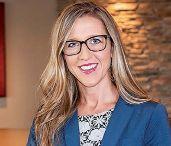

Landis, a mortgage banking officer since 2012, is located at a Bismarck branch. She joined Starion in 2006 as a teller, advanced to business banking representative in 2007, and became a mortgage underwriter in 2008. Landis earned an associate degree from Bismarck State College and a bachelor’s degree from Dickinson State University, both in business administration. She is currently the president of Bismarck Dollars for Scholars board of directors and is involved as an affiliate member of the Bismarck-Mandan Homebuilders Association and Bismarck Mandan Board of Realtors.
MINOT, N.D. • Justin Andre has joined the Ackerman-Estvold Minot office as a full-time operations and maintenance technician. Andre earned an associate degree in water technology from the Dakota College at Bottineau. He also holds certifications in Class III water distribution, Class II water treatment, and Class I wastewater collection.
Andre has provided utility management and maintenance for several local agencies over his 20-plus-year career. He will be developing the company’s operations and maintenance team, putting his experience and certifications to work for its clients throughout North Dakota.
BISMARCK, N.D. • Starion Bank has named Rick Geloff its chief financial officer, overseeing and representing all financial operations for the bank and its holding company. As CFO, Geloff will join the bank’s executive committee, which is responsible for initiating key actions within the organization, reviewing financial data and setting major project priorities. He is located at the downtown Bismarck branch. Geloff first joined Starion in 2013 as a credit analyst. He also served in the roles of business banking officer and special assets officer prior to being promoted to financial reporting manager/VP in May 2018. In December 2019, he was promoted to controller.
Geloff is a certified public accountant and a member of the Bismarck School Board, currently serving as its president. He earned bachelor’s degrees in general studies and business management from Minot State University.
FARGO, N.D. • James Schechter and Cody McLaren joined Enclave Companies as project managers.

A graduate of North Dakota State University, Schechter brings more than 11 years of experience as project manager, CAD specialist, project management intern and laborer. Most recently, he served as project manager at McGough Construction.
A native of Breckenridge, Minn., McLaren graduated from NDSCS and spent the last six years as a project manager at Gast Construction.
FARGO, N.D. • Flint Group, a full-service communication and marketing agency, has hired Garth Wiedrich as a senior account manager and Jeremy Gruensteiner as an automated marketing strategist.


Wiedrich earned a master’s degree in business administration, as well as a bachelor’s degree in marketing from the University of North Dakota. Prior to joining Flint, he worked as a senior marketing strategist in the medical industry.

Gruensteiner is currently pursuing a bachelor’s degree in university studies from North Dakota State University. Prior to joining Flint, Gruensteiner worked as a project manager for a local software organization.

FARGO, N.D. • Toni Sandin, an attorney with Sandin Law in Fargo, N.D., has received her license to practice law in Arizona.
Toni practices in the areas of estate planning, including estate and gift tax planning and special needs trusts, probate and trust administration, and charitable planning. She works with individual and business clients on real estate transactions, including commercial leasing, as well as assists clients with business entity planning and business succession planning. Toni has been practicing since 2005 and is licensed in North Dakota, Minnesota, and Arizona. Toni is also a certified public accountant. She lives in Fargo.
“Now being licensed in Arizona gives our clients who spend time there in the winter, the ease of only working with us on all of their estate planning needs,” Sandin said. “It is our goal with every client that they get the highest customer service, and being licensed in this additional jurisdiction allows us more control to provide that full-service customer experience.”
BISMARCK, N.D.
• KLJ Engineering has welcomed Brian Sevart to its Bismarck office.

Sevart joins the company as an audio and visual specialist. He earned an associate degree in commercial and graphic art from Bismarck State College and has more than 20 years of experience in graphic design, photography and videography.

In these unprecedented times, we need to remind ourselves of the silver linings: society is going to pull through this mess and we have things to look forward to. One of them is what’s happening with Unmanned Aircraft Systems (UAS).
It is through the calamity we face as a society that the value of drones comes front and center. Drones are tools for remote sensing, and the term “remote” is synonymous with “distance.” This highlights the fact that UAS pilots, according to the Federal Aviation Administration, are called “remote pilots in command. Social distance is latent in its credentials.
Drones are born out of the need for higher levels of safety, and the levels of social distance they afford make them perfectly suited to fight the pandemic.
Take Google, for example, which started using drones to test the feasibility of deliveries much the same way Amazon is doing. Google’s Project Wing has effectively doubled the volume of their deliveries of baby food and other basic human amenities due to the virus. This is in no small part because of the many shelter-in-place orders. During such times, they are the only option for the general public if one wants drone delivery in North America.
In North Dakota, however, UAS pioneers have not been idle. The state caught on to the need for UAS-based delivery permissions and capabilities before Wing started making strides. A North Dakotan UAS company, for example, used a drone to deliver the script of the Grand Forks mayor’s State of the City speech in 2016, and the Northern Plains UAS Test Site (NPUASTS) delivered the powerpoint remote control to the Governor in the State of the State speech with a drone in 2020.


While these small demonstrations are indicators of the shape of things to come, some monumental progress was made in early April in North Dakota when Sen. John Hoeven called on the Administrator of the FAA to give expedited permissions to the NPUASTS in order to deliver medical supplies.
I’m captivated by the strong leadership in our state while we power through the coronavirus, particularly coming out of Gov. Doug Burgum’s office. To his credit, Gov. Burgum has been a vocal advocate of the UAS industry and is aware of SkySkopes’ coalition to use UAS to eradicate COVID-19. Additionally, Lt. Gov. Brent Sanford has been at the national vanguard of UAS as the head of the Northern Plains Unmanned Systems Authority, the parent organization to the NPUASTS.
The UAS coalition of North Dakota entities rallying around the cities of Hillsboro and Grand Forks is maybe the most incredible flight operation I have ever seen in a lifetime of aviation.
The partnerships, the mission sets, the technologies and the flight purpose have all come together to show how UAS can help get the nation back at full strength.
Through the NPUASTS’ missions, the virus emphasizes the state of North Dakota’s ability to maintain its consciousness of and commitment to social responsibility. Furthermore, the test site has been the champion of a statewide network of UAS radars to help UAS fly beyond-visual-line-of-sight (BVLOS) commercially, and at scale, probably before anywhere else in the United States.
Dr. Amy Whitney and the innovation center at the University of North Dakota could not possibly be doing any better at fostering the UAS business ecosystem. The team quickly recognized the need to prove out the aggregate impact of UAS emergency response capabilities against the virus, including with the HUBNet Radar. These missions culminated in a collaboration with NDSU to use UAS to spray disinfectant from the air in places such as playgrounds to protect children from the virus, deliver medical supplies to relevant community health personnel, and use UAS thermal sensors in research-designated areas seeing if people had elevated body temperatures symptomatic of the coronavirus.
That such UAS missions, executed in a medically safe fashion, are ways to fight the virus, and because North Dakota is perhaps the capital of the drone world, pilots do not see this as an opportunity but as their duty.
This is not the first time UAS entities in North Dakota have converged on Hillsboro. Many assembled around Traill County in May 2017 in what proved to be the dress rehearsal for the UAS virus combat missions. Xcel Energy was sponsoring a mock disaster scenario with General Electric, having a simulated tornado ripping through the cities. This was the first time a Medium Altitude Long Endurance (MALE) UAS had been used to task sUAS commercially in the United States, and the lessons learned served as the foundation for the team to have a home court advantage against the virus.
Much of this comes from the genius of Hillsboro’s Mayor Terry Sando, one of the mission’s architects and “air bosses.”
He is currently the military liaison for North Dakota’s Congressman Kell y Armstrong and spent a career in military intelligence where he retired as a USAF full-bird colonel. UND’s Research Institute for Autonomous Systems with meteorology professor Dr. Mark Askelson as its executive director, has shown a stunningly nimble quick response capability, as it brings the new concept of electronic observers to the mission.
The “Electronic Observers,” a novel concept in the UAS industry, maintain the remote situational awareness brought to the table by L3Harris’ RangeVue technology. This operation was the first real-world use of the L3Harris Unmanned Beyond Visual Line of
Sight Network, which, as a UAS radar, is the predecessor to the NPUASTS’ statewide UAS radar network.
Drone use has increased in a logarithmic fashion and the virus doesn’t seem to be slowing it down. Despite the hard times we are all experiencing, I believe this is something positive in the Midwest. Certain businesses, such as in the utility sector, have actually done well during these otherwise unprecedented times, in part because of its use of drones.

I cannot help but congratulate the largest utility companies on the West Coast for their understanding and advocacy of the use of UAS, and how they are able to define the role of UAS pilots as essential service personnel.
Energy companies still use drones at scale during the pandemic to prevent wildfires and blackouts while the virus is out in the open. One of the worst things the country could have is a blackout at this critical moment in human history, or worse, a wildfire. That the energy companies are keeping drones in the air, to me, should remind us that there is light also at the end of the tunnel of the pandemic.
While much has changed over the past several weeks due to the coronavirus pandemic, one thing that has not changed is how businesses use drones. In fact, if something good is to come from the worldwide emergency it just might be that businesses have learned to utilize drones even more. If anything can be considered a silver lining to these onerous times, one is that the UAS frontier in the Midwest and American West is starting to crystallize.
Matt Dunlevy is the president and CEO of SkySkopes, based in Grand Forks, N.D. The company has several offices in North Dakota, with a footprint also in Minnesota, Oregon, California and Texas.
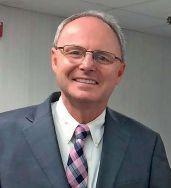
Finding the perfect employee for any organization is an important and often painful task.
Employment in human resources has become a much more critical job than it was once thought to be. Human resource professionals have a big task keeping track of rules, regulations, insurance options, safety, personnel training, and a host of other important factors that contribute to making a good employer.
Almost every organization claims to put employees first and most actually do, yet it is easy for an employee to feel that other employers are better. Over time, how employees are treated becomes a strong part of an organization’s culture. Not all people are going to find a particular culture appealing, so when hiring, the human resource professional must attempt to explain to prospective employees what the work culture is like where they would be working.
I was shocked to have an “up and comer” assistant manager resign after the individual learned that overtime was an expected part of a manager’s work week. When agreeing to the position, pay, flexibility and the work in general, everything seemed just great but 8 a.m. to 5 p.m. was all this person felt a job should require. The management team I worked with asked “how does this individual ever expect to get ahead in life only working 40 hours?”
My disappointment with the loss of what I expected to be a key contributor over time was difficult to overcome, but disappointment with a particular individual is far better than learning too late that the individual didn’t fit the role or became a failure.
I observed a young manager who put his faith in a promising employee in his department who let him down tremendously by calling in sick and having personal issues, of which he tried to help with. After the offending employee was discharged for cause, the young manager said “I’m never going to make that mistake again.” My reply was “of course you will.” “You have faith in people and want them to succeed.” This young manager has now grown into a leadership position and has a major impact in the organization he is a part of.
One of the best leaders I ever encountered was ridiculed and discredited by fellow employees on his rise to the top of his organization. The naysayers were quick to try to put down the person in fear of the future under his leadership. Knowing what the jobs actually required, being extremely strong and extraordinarily intelligent, the person rebuffed the attacks and quickly rose to the top. Today, the leader is a key person and with few, if any exceptions, is one of the most respected people involved with the business.
The perfect employee is rare and hard to find, though great employees make the quest worthwhile.
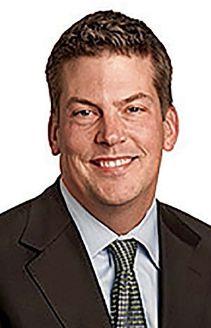



In what ways has the coronavirus made you rethink business strategies? What policies and programs have you adopted, or are considering to adopt, in order for your business to remain viable in light of current challenges?









We have put heavy emphasis on innovation for years. The recent COVID-19 situation requires us to continue to innovate our processes and challenges us to solve problems in a new way. Our decision to close our physical offices and serve clients remotely forces us to refine processes and improve project management. We expect to have new ideas for how we serve our clients once we’re through this.
Our firm has embraced a flexible work place and culture. We are confident we are well prepared to serve clients from anywhere. Our footprint at Eide Bailly covers 14 states and because our people often specialize in various industries and specialty services, there is a lot of teamwork and collaboration between geographic offices. This requires the use of collaborative tools like Teams, Zoom, and Skype. The current interruption may lead to an increase in the utilization of these tools that may benefit us in the long term.


Our ability to work from anywhere is something our workforce perceives as a benefit and it allows us to be more responsive to clients. We understand the importance of building relationships with clients, and that is best done in face-to-face meetings, but in the situations where that is not possible, we are confident we can serve our clients and work collaboratively as a team.
COVID-19 has impacted almost every area of our operations at the North Dakota Department of Commerce. We have teamed up with other state agencies and community partners to collaborate and disseminate valuable resources for businesses and communities. We have also re-assigned staff throughout the department to best serve the state’s business needs.

The travel and tourism industry has been the first and most impacted industry. With travel restrictions, restaurants and public gathering spaces closed and hundreds of events and conferences canceled, the impact will be huge.
We are working with our tourism network throughout the state, hosting weekly calls, posting daily website updates and positioning North Dakota to be the destination of choice once it is safe to travel. We are continuing to counsel travelers and sending out materials. We are also reviewing our marketing and media plans weekly, adjusting creative messaging, channels and timing to assure that once the health threat is behind us, visitors will know that North Dakota’s wide-open spaces are the perfect place for a safe and affordable vacation. One of the new themes we introduced this year, “follow your curiosity, not the crowds,” should be even more impactful in light of this pandemic.

 Sara Otte Coleman Director, Tourism Division
Sara Otte Coleman Director, Tourism Division

North Dakota
Department of Commerce

Bismarck, N.D.

DRN ReadiTech is a telecommunications cooperative that takes great pride in how we take care of all our members and customers. The COVID-19 pandemic provides challenges relative to DRN ReadiTech business strategies but more in the way we are interacting with members/customers.
Our broadband and landline phone service has been deemed an essential service, so we are committed to keeping our 100% fiber network up and running. The strategy of helping all members/customers remains the same with a few added precautionary measures. Our leadership team has established a pandemic response plan and it evolves daily and relates to CDC recommendations. We have closed all our offices to the public, all employees except for a few identified essential employees are working from home and solving any customer issues remotely, service and install technicians are home garaging and only dispatched to a location in emergency outage situations.
Typically, cooperatives are the “workhorses” of any given industry and DRN ReadiTech is no exception, our employees are built to adapt and overcome situations such as COVID-19 and they are all working through the challenges exceptionally.
DRN ReadiTech’s members have expressed their gratitude over the past few weeks daily for the work being done to keep the critical communications infrastructure up and working without a hitch or a glitch.










We’re all experiencing disruptions to the typical way we’ve conducted business. Our approach to working with clients has remained unchanged–listen first, empathize, and provide innovative solutions.

However, how we engage our clients has evolved beyond the “usual suspects” like video conferencing. We’re taking tools that were primarily internal resources and are now training clients to use them to facilitate better collaboration with our project teams, knowing we’re all dealing with fluid schedules and limited to no in-person interaction. One example is Bluebeam Revu, a PDF markup and editing software that was specifically designed for the architecture/engineering industry, but can have broader applications.
Our firm recently conducted a Bluebeam training for our clients and partners. We believe this tool will not only help them be more productive in their own workplaces (as it has proven for ISG), but can also increase collaboration and realize new efficiencies when interacting with our firm remotely on specific projects.


It’s a win-win that was borne out of understanding the fact that we’re all in this together and the more we empathize and share, the more likely we will emerge from all of this stronger than before.

Among the numbers for March include total nonfarm payroll employment, which fell by 701,000 during the month. The unemployment rate rose to 4.4%, according to the U.S. Bureau of Labor Statistics. The changes in these measures reflect the effects of COVID-19 and efforts to contain it. Employment in leisure and hospitality fell by 459,000, mainly in food services and drinking places. Notable declines also occurred in health care and social assistance, professional and business services, retail trade, and construction. The other graphs on this page depicts the ebb, flows and declines in inflation and commodities. Drastic declines depict the impact of the coronavirus pandemic.
7
8
6 Percent
9 4
MARCH EMPLOYMENT
Source:
125.0
123.0 Index
10 2011 2012 2013 2014 2015 2016 2017 2018 2019 20202021 Source: U.S. Bureau of Labor Statistics COMMODITIES 121.0

124.0
123.5
122.5
124.5 122.0
121.5
U.S. Bureau of Labor Statistics
125.5 Oct 2019 Nov 2019 Mar 2020 Dec 2019 Jan 2020 Feb 2020 Source:
45,640
JOBSAND DEPENDON BUSINESSES NOR TH 3
DAK OTA 5


